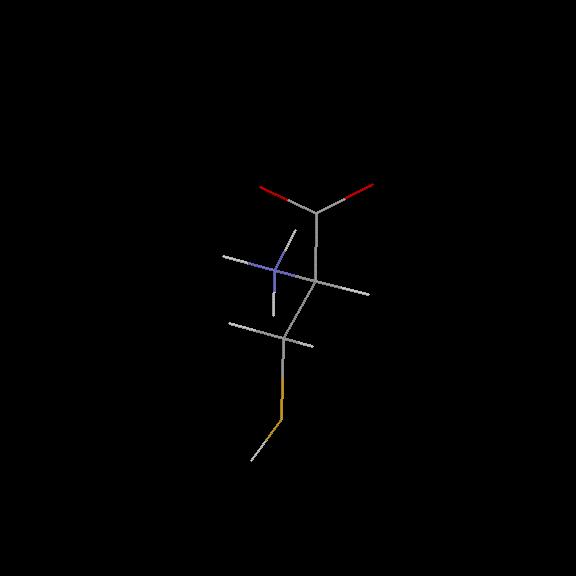L-cysteine
Cysteine, designated by the IUPAC-IUBMB abbreviations Cys and C, finds its etymological roots in the ancient Greek term "κύστις" (meaning "bladder"). Within the realm of protein synthesis, its L enantiomer stands as one of the vital 22 proteinogenic amino acids, encoded by messenger RNA utilizing the UGU and UGC codons. While it is not deemed essential for human nutrition, the body's endogenous production may prove insufficient, particularly in the context of certain metabolic disorders, malabsorption syndromes, as well as in children and the elderly, contingent upon varying health conditions.
As a natural α-amino acid, cysteine distinguishes itself through the presence of a sulfhydryl group –SH, giving rise to a thiol compound. Its analogs, selenocysteine and tellurocysteine, feature selenium and tellurium atoms replacing the sulfur atom, respectively.
Cysteine exists in trace amounts within most proteins, assuming a critical role primarily in the formation of disulfide bonds. Notably, the thiol group is highly susceptible to oxidation. Oxidation yields cystine, wherein two cysteine molecules are linked by a disulfide bridge. Further oxidation by more vigorous oxidants results in cysteic acid (HO3S–CH2–CH(NH2)COOH), a precursor to taurine, a decarboxylation product present in bile as taurocholate.
Various protective reactions are employed to safeguard cysteine thiols or reduce disulfide bridges, notably:
Abundant excess of free thiols displacement: by monothiols such as 2-Mercaptoethanol: HSH2C–CH2OH, by cyclizable dithiols, for instance, dithiothreitol: HSH2C–CHOH–CHOH–CH2SH; Alkylation of free thiols. Alkylation-based blockade is commonly utilized in protein research, notably employing iodacetamide leading to carboxyamidomethylation:
Cys–SH + IH2C–CONH2 → Cys–S–CH2–CONH2. Cysteine can be consumed as a dietary supplement in the form of N-acetylcysteine (NAC).
Its historical significance is underscored by its potential role in the early evolution of life on Earth.
Accession Number : KLM0000096 This work is released into the public domain; please see our release statement.

Synonyms :
- L-CYSTEINE
- Cys
- C
Config Rule :
config('L-cysteine',[
substituent(aminoacid_L_backbone),
substituent(methandiylsulfhydryl),
linkage(from(aminoacid_L_backbone,car(1)),
to(methandiylsulfhydryl,car(1)),
down,single)]).
%%%% Substituent Config Rules for compound 'L-cysteine' %%%%
config(aminoacid_L_backbone,[
left(amino),
right(hyd),
top(carboxyl),
center(car(1))]).
config(methandiylsulfhydryl,[
top(methandiyl(1,empty)),
bottom(sul(1,hyd))]).
Smiles String :
[C@2H]([NH3+])([C](=[O])[O-])[C@2H2][SH] 'L-cysteine'
Fischer Diagram :

Terminal :
% 'L-cysteine'
c(1,12,(0,chiral))-[n(1,left)~,h(1,right)~,c(2,up)~,c(3,down)~],
c(2,12,(0,nonchiral))-[o(1,nil)?,o(2,nil)?,c(1,down)~],
c(3,12,(0,nonchiral))-[h(5,left)~,h(6,right)~,c(1,up)~,s(1,down)~],
h(1,1,(0,nonchiral))-[c(1,left)~],
h(2,1,(0,nonchiral))-[n(1,right)~],
h(3,1,(0,nonchiral))-[n(1,down)~],
h(4,1,(0,nonchiral))-[n(1,up)~],
h(5,1,(0,nonchiral))-[c(3,right)~],
h(6,1,(0,nonchiral))-[c(3,left)~],
h(7,1,(0,nonchiral))-[s(1,nil)~],
n(1,14,(1,nonchiral))-[h(2,left)~,c(1,right)~,h(3,up)~,h(4,down)~],
o(1,16,(-5.0E-01,nonchiral))-[c(2,nil)?],
o(2,16,(-5.0E-01,nonchiral))-[c(2,nil)?],
s(1,32,(0,nonchiral))-[h(7,nil)~,c(3,up)~]
The Terminals for all the Config Rules are in Prolog Definite Clause Grammar (DCG) form.They can be checked in the Manual here.
The compound's PDB file can be seen here.
